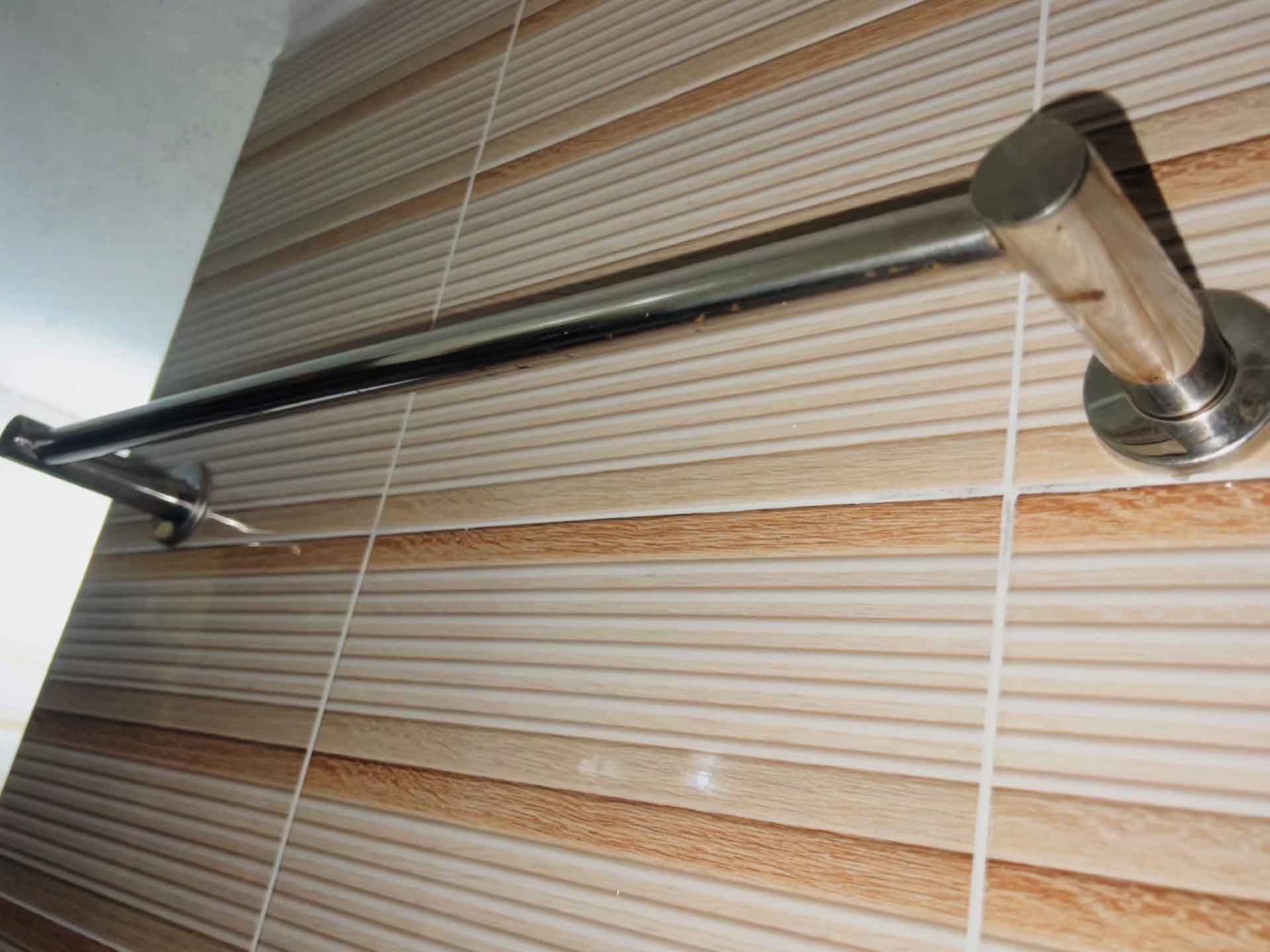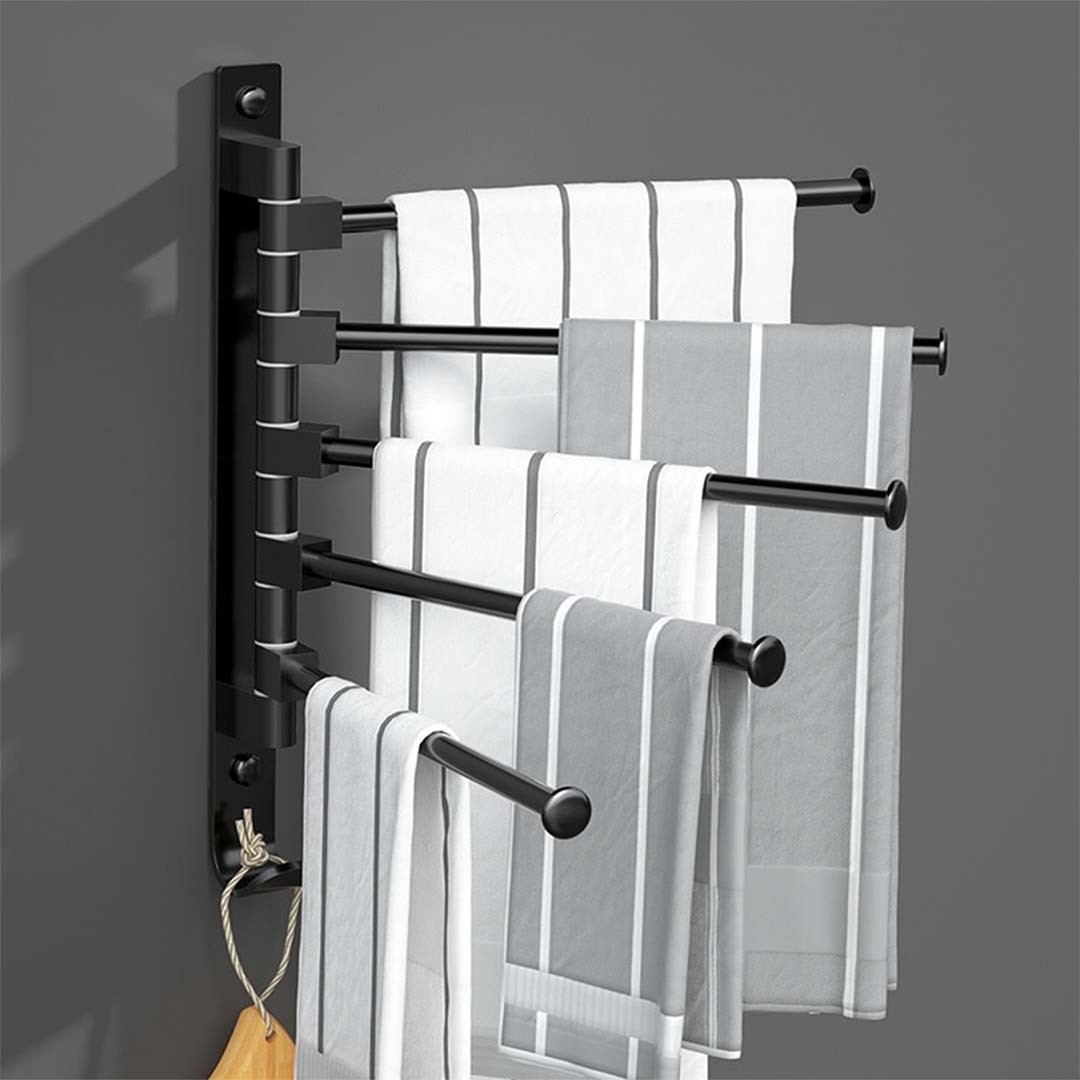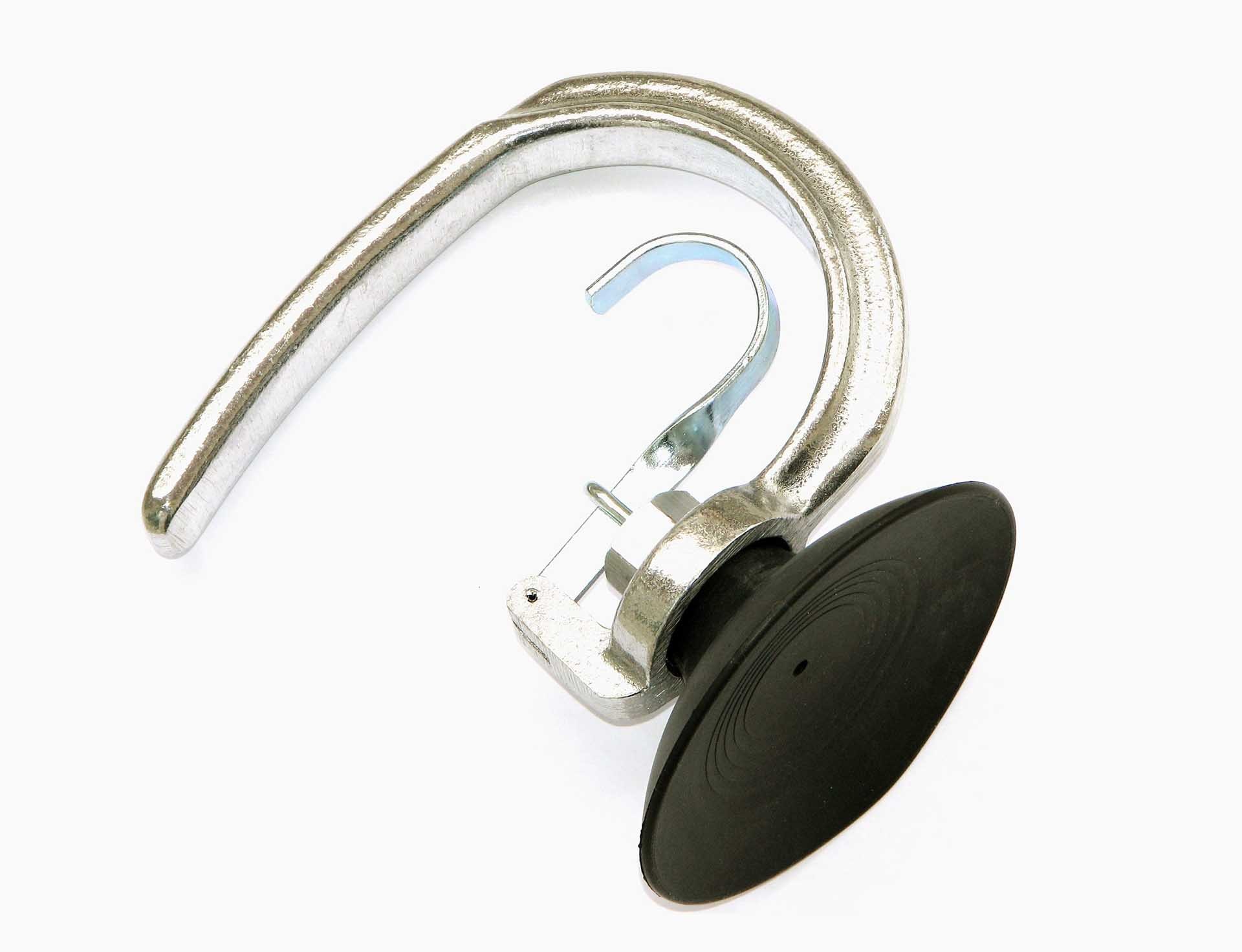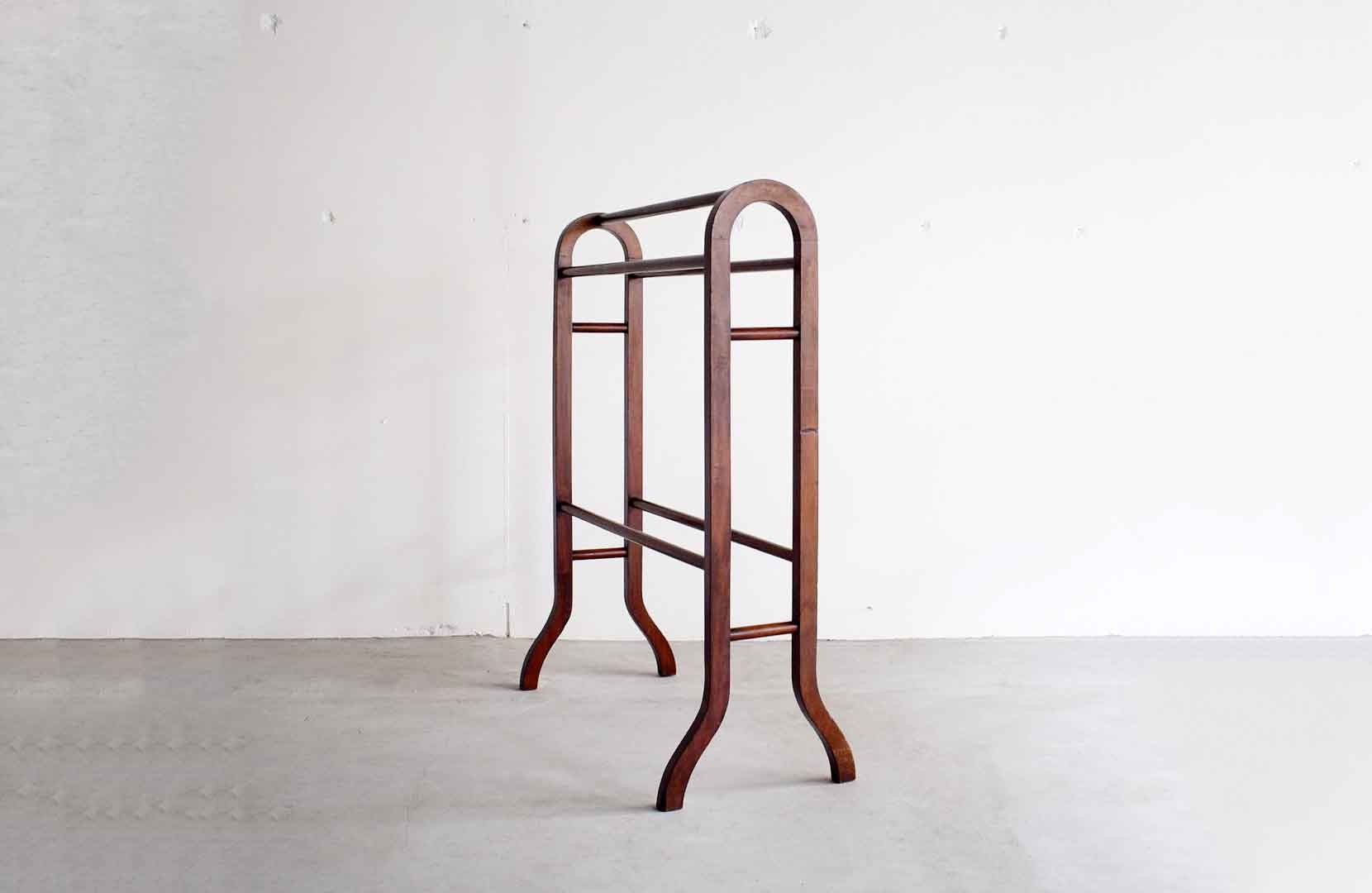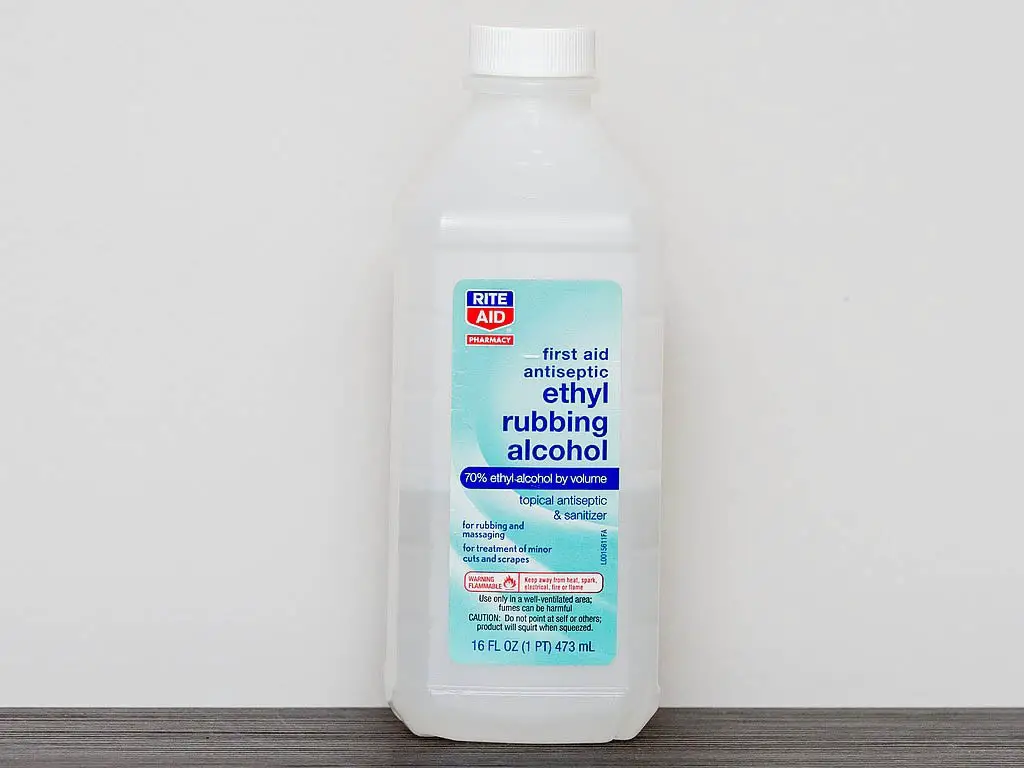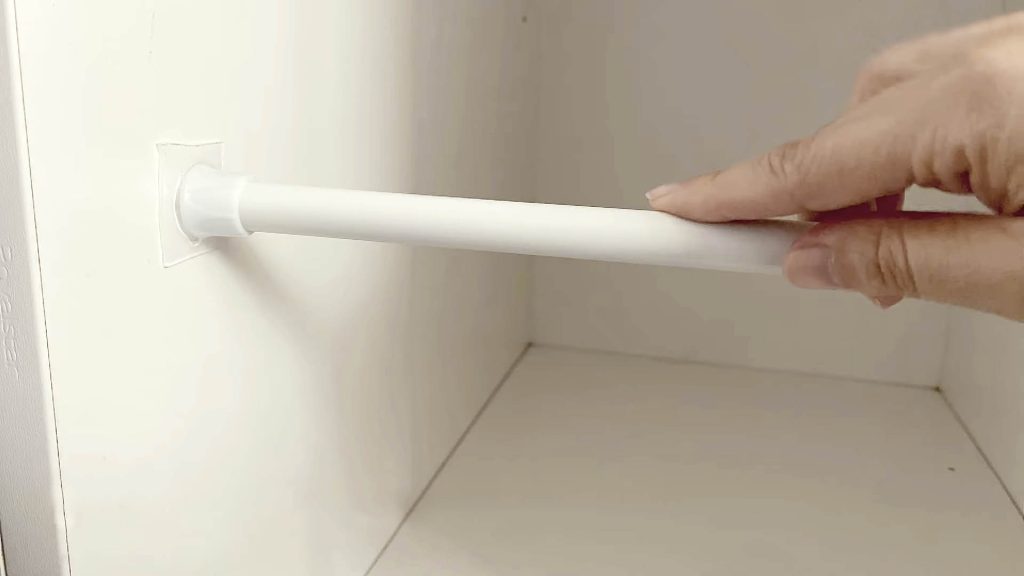The most common method to install towel racks in your residence are using screws for stud bolts. However, there are instances where you cannot use screws for hanging towel racks and have to look for alternatives.
There are several ways to do that. You can use adhesive towel racks, suction cups, tension rods etc. you can also use free standing towel racks or over-the-door towel racks as a temporary solution.
In this article, I will discuss various ways you can resort to hang towel racks without using screws. I will also shed some light on relevant matters such as situations where you might need to hang towel racks without using screws, how safe towel racks without screws are etc. so let’s get started!
Why You May Need To Hang A Towel Rack Without Screws?
Hanging towel racks using screws or stud bolts is the usual method. However, there are instances where you may need to think of an alternative. Here are some situations where you have to hang towel rack without using screws:
Rental Property
If you live in a rental property, your lease agreement may prohibit making holes in the walls. Many landlords want tenants to avoid piling holes in the walls for aesthetic reasons.
Although such holes can be easily mended using white cement, landlords don’t want to go through that hassle. In such cases, you’ll need alternative methods to hang items, like towel racks.
Temporary Solution
If you plan to move or renovate soon, you might want to avoid drilling holes in the walls for a permanent towel rack. If you use screws to install a towel rack, it will be quite a hassle to remove the towel rack from the wall.
It was my case when I wanted a towel rack in my rental home but wanted to avoid digging holes in the wall. Although my landlord was friendly enough to let me do that, I didn’t want to as I was about to move to my own house shortly.
Easy Installation
Installing towel racks using screws is a lengthy process. It requires meticulous and expert hands. In most cases, you will need a professional.
Although you can do it yourself using my DIY technique. For easy installation and avoiding hassle, you can use towel racks that you can hang or use without screws. Non-screw methods are simpler and quicker to install.
Flexibility
When you attach the towel rack to the wall using screws, you fix it on the wall. There is no changing its position if you don’t like it.
No-drill towel racks don’t attach to the wall permanently. They use various methods like adhesives, suction cups, etc. So you can easily remove them and change the position.
Options To Hang Towel Rack Without Screws
When you opt out of using screws to hang towel racks, there are many options. If you search online or go to your local Walmart, you can see several options to hang towel racks without using screws. Let’s have a look at the opportunities to hang towel racks without using screws:
Adhesive Towel Racks
Adhesive racks have strong adhesive backings that stick to the wall. The adhesive is a special material that can attach to various surfaces, such as concrete, tiles, wood, etc.
Adhesive towel racks are sturdy, and they can hold a considerable amount of weight. You can also remove them without leaving damage or residue. Note that adhesive towel racks and adhesive hooks are different.
Although their attaching mechanisms are the same, one is a towel rack, and another is just a hook where you can hang your towel. The latter takes significantly less space.
Tension Rods
You can use Tension-based towel racks if you want a towel rack in a tight, closed space. Tension rods press against the walls to stay in place.
So, you cannot place them on a flat wall. You can only place tension rod towel racks where two walls face each other (like two pillars or columns).
Over-the-door Hooks or Racks
Over-The-Door racks are temporary solutions for towel racks. You can hang them on the door of the shower. You must remove the rack once you leave the shower because you need to hang them on the wall.
Also, you cannot close the door using this type of towel rack. Over-The-Door towel racks are more suitable if you live alone, in a dorm, or a hotel room with no towel rack for some unfortunate reason.
Suction Cup Hooks
We all know suction cups. I don’t have to introduce this crowd-favorite piece of utility. There are towel racks available in the market that use Suction cups. However, suction cups only attach well on smooth surfaces, like tile, metal, or glass.
So if your bathroom has a tile wall, you can use suction cup towel racks. If your bathroom has concrete or wooden walls, suction cup towel racks may not be the best solution. My bathroom has a tile wall, so I can comfortably use suction cup towel racks.
Freestanding Towel Racks
Free Standing towel racks are exactly what they sound like. They are like crockery racks, book racks, etc.
They hold your towel when you shower; that’s it. Freestanding towel racks are the most convenient non-screw towel rack option.
How To Hang Towel Racks Without Screws?
All the towel racks I’ve discussed above work in different ways. No matter which one you choose, you will need a slight heads-up on how to use it. So here are how to install different types of non-screw towel racks:
Adhesive Towel Racks/ Adhesive Hooks
Adhesive towel racks use adhesive or glue to attach to the wall. You might need to use separate glue depending on your towel rack.
Materials You Will Need:
- Adhesive screws/adhesive towel rack
- Level
- Pencil
- Cleaning solution
Procedure
Step 1. Clean the Wall
First, Use a mild cleaning solution or rubbing alcohol to clean the area. The adhesives won’t attach appropriately if there is any dirt or residue on the surface.
As a result, the towel rack will become wobbly and won’t work to its 100% capability. It may also damage the wall. So use a cleaning solution to clean the wall properly.
Step 2. Mark the Positions
Hold the towel rack against the wall where you want to install it. Use a pencil to mark the positions.
Although it is not a mandatory step, marking the positions with a pencil will help align the rack properly. You can also use a level to ensure the towel rack is straight.
Step 3. Prepare The Rack For Installation
There are several ways you can prepare the rack for installation. If the rack comes with self-adhesive, you just need to peel off the protective layer and attach the rack to its place.
If it is not the self-adhesive type, you need to clean the attachment plate of the rack and then apply adhesives to it. How much you should use and how to apply the glue should be stated on the pack. I always prefer self-adhesive towel racks for apparent reasons.
Step 4: Attach The Towel Rack
Now attach the rack carefully to the marked area. Press the rack gently so that it binds tightly. Don’t press too hard, as it might damage the rack and the wall.
Once the adhesive is mildly set, you can let go. Give it time to set completely. If you don’t properly install it, it might become loose. You can fix loose towel racks that use screws or bolts, but in this case; you’ll have to detach and reattach the rack completely. So be patient.
The package should contain information on how long it will take to set fully. After that, you can use it to hang towels and other clothes.
Tension rods
Tension rods use tension to hold themselves to walls. Unlike other towel racks, you will need to wall surfaces facing each other to use tension rods.
Materials
- Tension rod
- Marker/pencil
- Clean cloth
Procedure
Step 1: Measure The Space
First, measure the space between the walls. You will not have to buy a tension bar of exact measurement because all the tension bars in the market have adjustable lengths. Knowing the length measurement between the walls will give you an idea of what you should aim for.
Step 2: Clean The Walls And Tension Rod
Once you get a tension rod of proper measurement, it’s time to prepare the surface. Clean the wall with clean water, then wipe the water to dry the wall. Do the same with the attaching surface of the bar.
Step 3: Adjust The Tension Rod
Adjust the length of the rod to a length that’s not too long or too short. If the bar is too long, you won’t be able to insert it between the walls easily.
If it’s too short, you’ll have to adjust the length while holding the bar in its place. It will be time-consuming and tiresome. Extend the tension rod slightly shorter than the measured space between the walls.
Step 4: Install The Towel Rack
Now hold one end of the bar on the marked wall position. Keep it steady and place another end of the tension bar on the opposite wall.
It should fall slightly short, so increase the length until it presses against the wall tightly enough to let go. That’s it! Now test its stability and start using it.
Over-the-door Racks
Over-the-door towel racks are hung over the door of the shower. As you can understand, you cannot close the door if you use this type of towel rack.
Materials
- An over-the-door towel rack or hanger
Procedure
Over-the-door towel racks are, well, towel racks that you hang over the door. There is no assembly and installation.
You don’t need any tools, either. Just check the bathroom door width before purchasing an over-the-door towel rack. Then hang it over the door; it’s that simple!
Suction Cups
Suction cups use the atmospheric pressure to stay in place. This cups are highly popular options to attach various things to the wall.
Materials
- Towel rack with suction cup
Procedure
Step 1: Choose A Smooth Surface
Suction cups attach better on smooth surfaces like metal, glass, or tiles. If your bathroom has tile walls, that’s great.
If not, try attaching the suction cup to the shower wall, as shower walls are almost always made of glass.
Step 2: Clean The Surface
Same drill here; clean the surface before attaching it. A clean surface always provides a better seal for anything, a suction cup, adhesive, tension bar, etc.
If the surface is visibly clean, clean it with water and wipe the water. If it’s dirty, use alcohol or other appropriate cleaning solution.
Step 3: Wet The Suction Cups
Many don’t know this; suction cups work better if you wet the sinner surface slightly with warm water.
Moisten the suction cups slightly with warmth. If you don’t have warm water, regular temperature will also work. It will help create a better seal and enhance the suction’s effectiveness.
Step 4: Position The Towel Rack
You don’t need to use a pencil or marker before attaching the suction cup towel rack because it is the least permanent towel-hanging solution on the list.
You can remove and replace it as many times as you want. However, try to avoid doing so, as removing it repeatedly will deteriorate the suction cup’s capacity to create a tight seal.
Freestanding Towel Racks
Freestanding towel racks stand on the floor, just like that. It’s like any other rack for crockery, books etc.
Materials
- Freestanding towel rack
Procedure
Just like over-the-door towel racks, there isn’t any hassle of assembly and installation with freestanding towel racks.
Just choose a place, buy a freestanding towel rack, and place it there. buy a rack that fits in your bathroom. Also, if your towel rack comes disassembled, assemble it following the manufacturer’s instructions.
Essential Tips For Using Towel Racks Without Screws
These temporary solutions for towel racks are great, but you have to understand they are not permanent towel racks that you attach to the wall with screws. So following some tips will help you make sure your towel rack stays secure, and you stay safe. Let’s have a look:
- Never put anything overweight on the towel rack
- Always clean the surface before attaching the towel rack. (for adhesive, suction cup, tension rods)
- Always purchase good quality towel racks
- Install the towel rack in place that’s easy to reach from your tub
- Don’t put other clothes on these types of towel racks
Is Hanging Towel Racks Without Screws Safe?
Hanging towel racks without screws can be safe if you do it correctly. However, there are some things you should pay attention to when using alternative methods to hang towel racks:
Wall Surface
The type of wall surface matters. Adhesive mounting and suction cups work best on smooth, non-porous surfaces like glass or tiles.
You can use tension rods between two walls or other sturdy surfaces. If you can’t use suction cups, adhesive towel racks or tension rods, you can go for over-the-door towel racks or free standing towel racks.
Adhesive Quality
If using an adhesive mounting, use high-quality adhesive strips or pads specifically designed for hanging towel racks.
It’s always better to use self-adhesive towel racks rather than using separate glue. If you use third party adhesive, make sure it’s made for that purpose.
Proper Installation
Whether using adhesive mounting or suction cups, always make sure the towel rack is securely attached to the wall.
No-drill towel racks do not attach as tightly as screw or stud bolts. So install them properly and don’t hang anything other than towels.
Also Read:-What Are Guest Towels Used For? A Complete Guide
Faq
After reading this far, there might be some questions stuck in your mind that are making it difficult to understand things properly. I believe these questions and answers will clear up confusions:
Is Adhesive Mounting A Reliable Way To Hang A Towel Rack Without Screws?
Adhesive mounting is reliable for lightweight towel racks on smooth, non-porous surfaces. However, following the manufacturer’s instructions and using a suitable adhesive for the specific wall material is essential. Adhesive mounting may need to be more secure for heavier towels or items.
Can I Use Suction Cups To Hang A Towel Rack On Tiles Or Glass Surfaces?
Yes, suction cups can work well on smooth, non-porous surfaces like metal, tiles or glass. They are easy to install and remove without causing damage to the wall.
Remember that suction cups may not hold well under heavy loads or constant use. Also if the surface is not smooth, suction cups won’t work well.
What Is A Tension Rod, And How Do I Use It To Hang A Towel Rack?
A tension rod is a spring-loaded rod that relies on pressure to stay in place between two walls or sturdy surfaces.
To use a tension rod for a towel rack, adjust the rod’s length to fit the space and then hang the rack from the rod. This method works well for lightweight towels and is easily removable. You can also hang curtains using tension rods.
How Do I Remove A Towel Rack Installed Without Screws?
For adhesive mounting, carefully follow the removal instructions provided by the manufacturer to prevent damage.
With suction cups, gently lift the edges to release the vacuum seal before pulling them away from the wall. Tension rods are easy to remove—release the tension and take the rod down.
Conclusion
Hanging a towel rack using screws is the most common and practical solution. but there are lots of situations where you can’t take the most obvious approach. Luckily there are lots of alternatives to hang towel racks without using screws that work almost as good as screws or stud bolts.
You can hang your towel rack by using adhesive hooks, tension rods, or over-the-door hangers. These alternative methods are versatile and they allow you the freedom to rearrange your towel rack if you desire. So, whether renting a space or simply seeking a hassle-free installation, these non-screw options offer a quick and efficient way to add functionality and style to your bathroom or any other space.
Also Read:-Does Putting A Towel Under The Door Block Sound? A Comprehensive Guide

